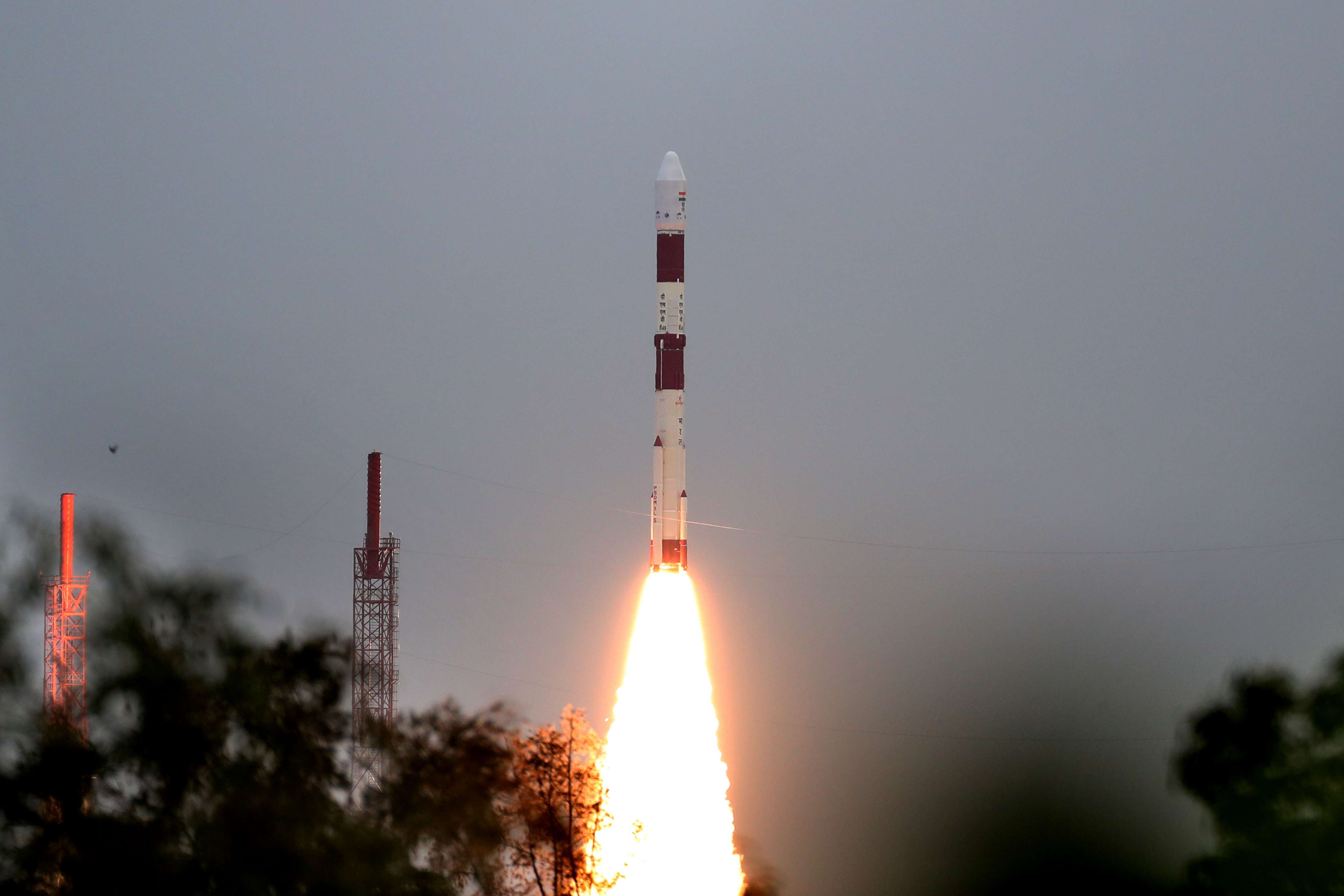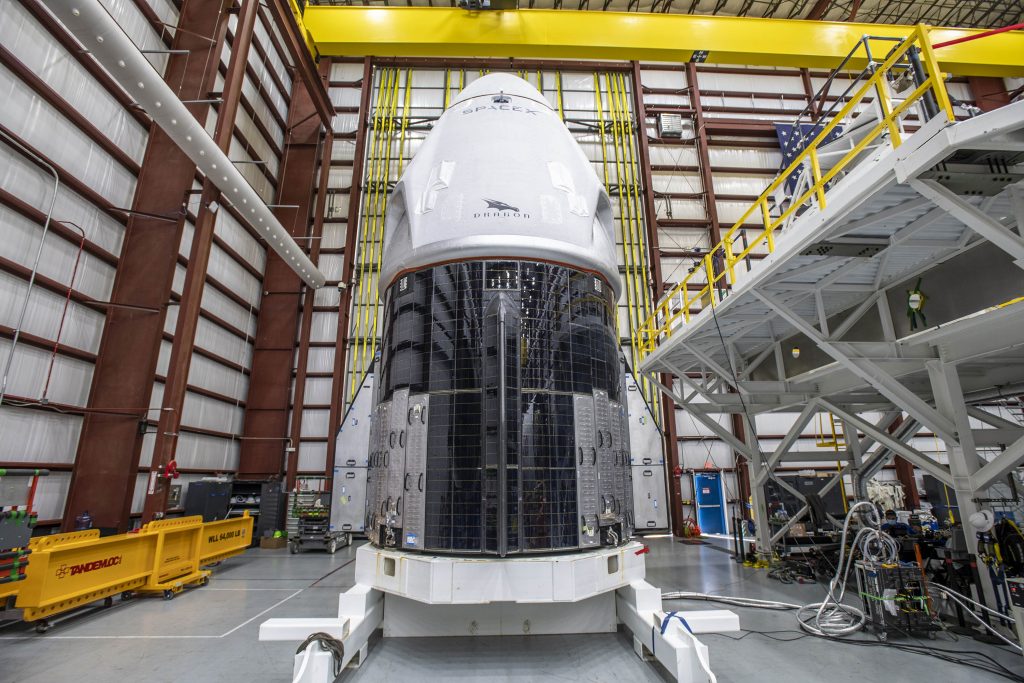
ISRO's PSLV-C49 rocket carrying India's EOS-01 earth observation satellite and nine international customer spacecraft lifts off from the Sriharikota spaceport. Photo: ISRO
SRIHARIKOTA (PTI): India successfully launched its latest earth observation satellite EOS-01 and nine international customer spacecraft on board a Polar rocket from the Sriharikota spaceport on Saturday, in its first mission this year amid the COVID-19 pandemic.
The Indian Space Research Organisations workhorse Polar Satellite Launch Vehicle (PSLV-C49) injected EOS-01, intended for applications in agriculture, forestry and disaster management support and other satellites one by one in orbit around 20 minutes after lift-off from the Satish Dhawan Space Centre (SDSC), about 110 km from Chennai, at 1512 IST on Saturday.
This is ISRO’s first mission this year after the COVID-19 pandemic induced lockdown disturbed 10 missions being planned by the agency. The nine customer satellites are from the USA, Lithuania and Luxembourg.
ISRO Chairman K Sivan described the mission as a "success" and termed it as "unusual" for ISRO as a rocket launch cannot happen like 'work from home' and all engineers and technicians had to travel from different centres and work together at Sriharikota for rocket launches.
"Today, I am extremely happy to declare that PSLV-C49 successfully placed earth observation satellite EOS-01 as well as nine customer satellites precisely into 575 kms orbit," he said at the mission control centre.
Subsequent to the successful launch, the primary satellite commenced operating its own functions including deployment of solar panels, Sivan said.
In view of the pandemic, ISRO implemented precautions for COVID-19 and scientists, mission directors, project directors, were seen with face masks and maintaining social distancing at the mission control centre.
There was no gathering of media persons and the public viewing gallery too was closed.
ISRO made arrangements for live telecast of the launch through various platforms, including its website and social media sites.
In a text book sequence, the four stage 44.5-metre tall PSLV-C49, in its 51st flight, blasted off from the first launch pad of SDSC at 3.12 pm at the end of the 26-hour countdown and soared into the sky.
The launch, originally scheduled for 3.02 PM, was delayed as the scientists around 15 minutes before lift-off "decided to put on hold following debris on the path of the rocket and inclement weather conditions."
After the 10 minute delay, the rocket blasted off amid heavy rain leaving a trail of orange fumes before vanishing into thick clouds over the spaceport.
After a flawless flight with all four stages performing as programmed, the rocket first injected primary satellite EOS-01 into orbit around 15 minutes after lift off, followed by the customer spacecraft as the mood at the mission control centre turned jubilant with scientists breaking into cheers.
PSLV Mission Director S R Biju announced that all 10 satellites were separated and placed into desired orbits.
"PSLV-C49/EOS-01 mission is fully accomplished," he said amid loud cheers from fellow scientists at the centre.
Noting that the mission was "very special", "very unusual" for ISRO, Sivan congratulated the ISRO team, who had to reach Sriharikota from different centres amid the pandemic and said the EOS-01 satellite team and those behind the nine satellites would now take care of the rest of the mission.
Besides human resources, he also referred to availability of 'hardware' for the launch as they had to be transported 'carefully' from various parts of the country to Sriharikota.
"Under this COVID-19 pandemic, team ISRO rose to the occasion and worked very carefully with limited staff, while at the same time meeting all protocols outlined by the government. They have worked without compromising on quality", the chairman, wearing an N-95 mask, said.
The Chairman also complemented the directors of ISRO's various centres for taking care of the employees, their health and for defining real Standard Operating Procedures (SOPs) to ensure work progressed.
With just one week to go for Deepavali festival, the chairman in a lighter vein said that before the festival itself, ISRO has made a successful rocket launch.
"Definitely, you can enjoy more on this one. Let me wish all the best for all the employees, as well as their families.
Jai Hind", he said as he signed off.
ISRO said it used the PSLV-DL variant, equipped with two strap-on motors, for the launch.
This is the second time it was deployed after the PSLV-C44 mission which had successfully launched imaging satellite Microsat R on January 24, 2019.
The customer satellites were launched under an arrangement with ISRO’s commercial arm NewSpace India Ltd.
The R2 satellite from Lithuania is for 'technology demonstration' while four from Luxembourg Kleos (KSM- 1A/1B/1C/1D) would be used for maritime applications.
The other four satellites from the United States – Lemur (Lemur-1,2,3,4) – are meant for multi-mission remote sensing purposes, the ISRO said.
According to the space agency, Saturday's launch is the 76th vehicle mission from Sriharikota and the 38th from the first launch pad.
 Previous Article
Previous Article Next Article
Next Article












The Indian Air Force, in its flight trials evaluation report submitted before the Defence Ministry l..
view articleAn insight into the Medium Multi-Role Combat Aircraft competition...
view articleSky enthusiasts can now spot the International Space Station (ISS) commanded by Indian-American astr..
view article